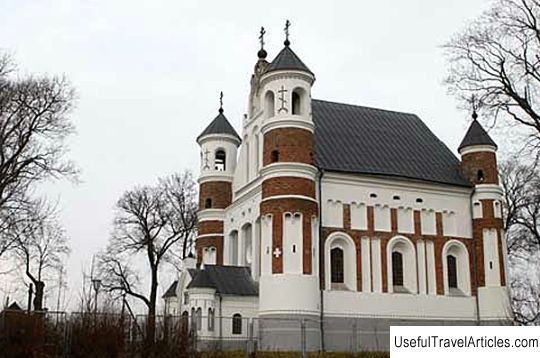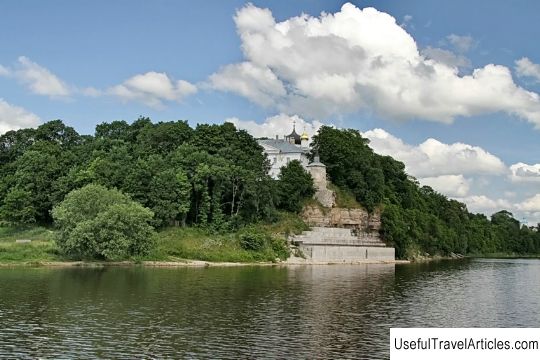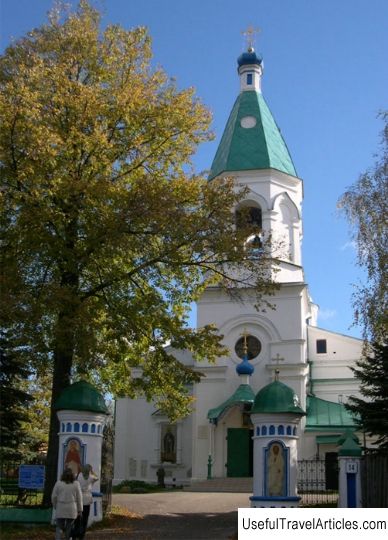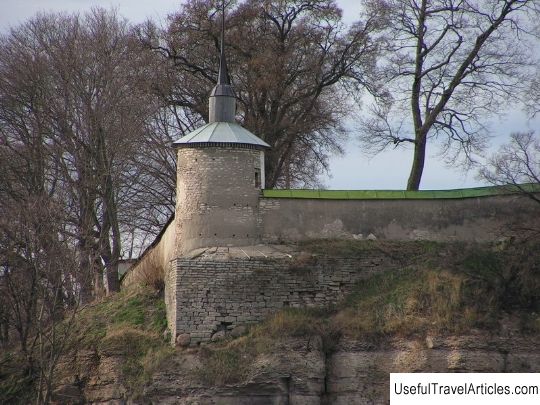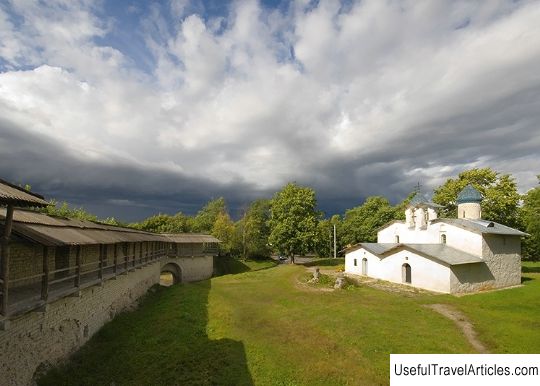Planetarium (former Church of the Nativity of the Virgin) description and photos - Russia - North-West: Pskov
Rating: 8,4/10 (785 votes) 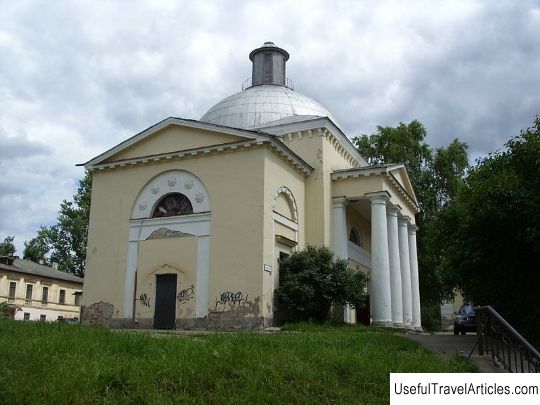
Planetarium (former Church of the Nativity of the Virgin) description and photos - Russia - North-West: Pskov. Detailed information about the attraction. Description, photos and a map showing the nearest significant objects. Photo and descriptionThe Pskov Planetarium was formed in February 1974. It is located in a historical and architectural monument of the 19th century - in the Church of the Nativity of the Virgin, which once belonged to the Staro-Voznesensky convent. The Nativity Church was built in 1833 during the reign of Abbess Agnia II, to replace the old temple Old Ascension, dismantled in 1825 due to the dilapidation of the south side-altar of the same name. The creator is unknown. The church was built at the expense of benefactors, the first of which was a landowner from Pskov, brigadier Valueva Marfa Petrovna. The building is located on a small hill to the south-west of the Old Ascension Church. The temple is about 23 meters long and 12 meters wide. The walls are made of limestone slabs and bricks. The church has a rectangular shape in plan. The spatial-volumetric composition consists of the main quadrangle with a hemispherical covering, mock ledges and an altar, and 2 porticos on the northern and southern facades. On the dome there is a decorative wooden drum with a spire. The walls of the quadrangle have elongated window openings; the windows of the altar and the vestibule have straight small cornices (sandriks), on the second tier the window openings are semicircular, framed by an arched lintel, decorated with stucco rosettes. Semicircular windows contain bindings made in the form of half a flower with a large number of petals and taken from the inside by cubic lattices. The doorways of the vestibule and the quadrangle are located in small recesses, completed with flat and wide cornices. The rectangular side pilasters correspond to the portico colonnade. Porch, the altar and porticoes are completed with pediments with regular eaves. The brackets support the crowning cornice of the quadrangle. There is a round platform on the dome, which is fenced with a metal lattice. The premises of the inner space are interconnected by extensive arched spans, the vestibule and the altar have retained a vaulted box ceiling. After 1917 and until the end of the 1960s, the church was used for household needs. In 1968-1971, work was carried out to adapt the building of the temple to the Planetarium, which opened in 1974. In the course of this work, the facades were restored in their original form. During the Great Patriotic War, the porch was lost, from which the stone foundation is now preserved. The heads and crosses have not survived; the shape of the roof has been changed to some extent. The church interiors were changed in connection with the adaptation of the temple to the Planetarium: an interfloor overlap appeared, and in the newly arranged second floor there are mechanisms and the Planetarium hall for the demonstration of the planets and the starry sky, as well as for lectures. On the ground floor there is a lobby, a wardrobe, an office, a storage room, and bathrooms. A new staircase has been built in the altar part, which leads to the second floor. The planetarium has a Star Hall equipped with 60 seats, there is a German-made planetarium apparatus that creates the illusion of a night sky with stars on the dome. Additional effects are arranged in the Planetarium by means of special equipment. The Planetarium organizes viewing of more than 60 programs on various topics, designed for children of different ages (from preschool children to high school students), as well as adults. Each show in the Star Hall is a scientific and artistic show, where various projections of the starry sky, educational text, and musical accompaniment are harmoniously combined. Small children are introduced to astronomical fundamentals in the Planetarium, studying them together with the heroes of fairy tales. For adults, there are scientific and educational programs that tell about the modern achievements of astronautics and astronomy.       We also recommend reading Singkawang description and photos - Indonesia: Kalimantan Island (Borneo) Topic: Planetarium (former Church of the Nativity of the Virgin) description and photos - Russia - North-West: Pskov. |
